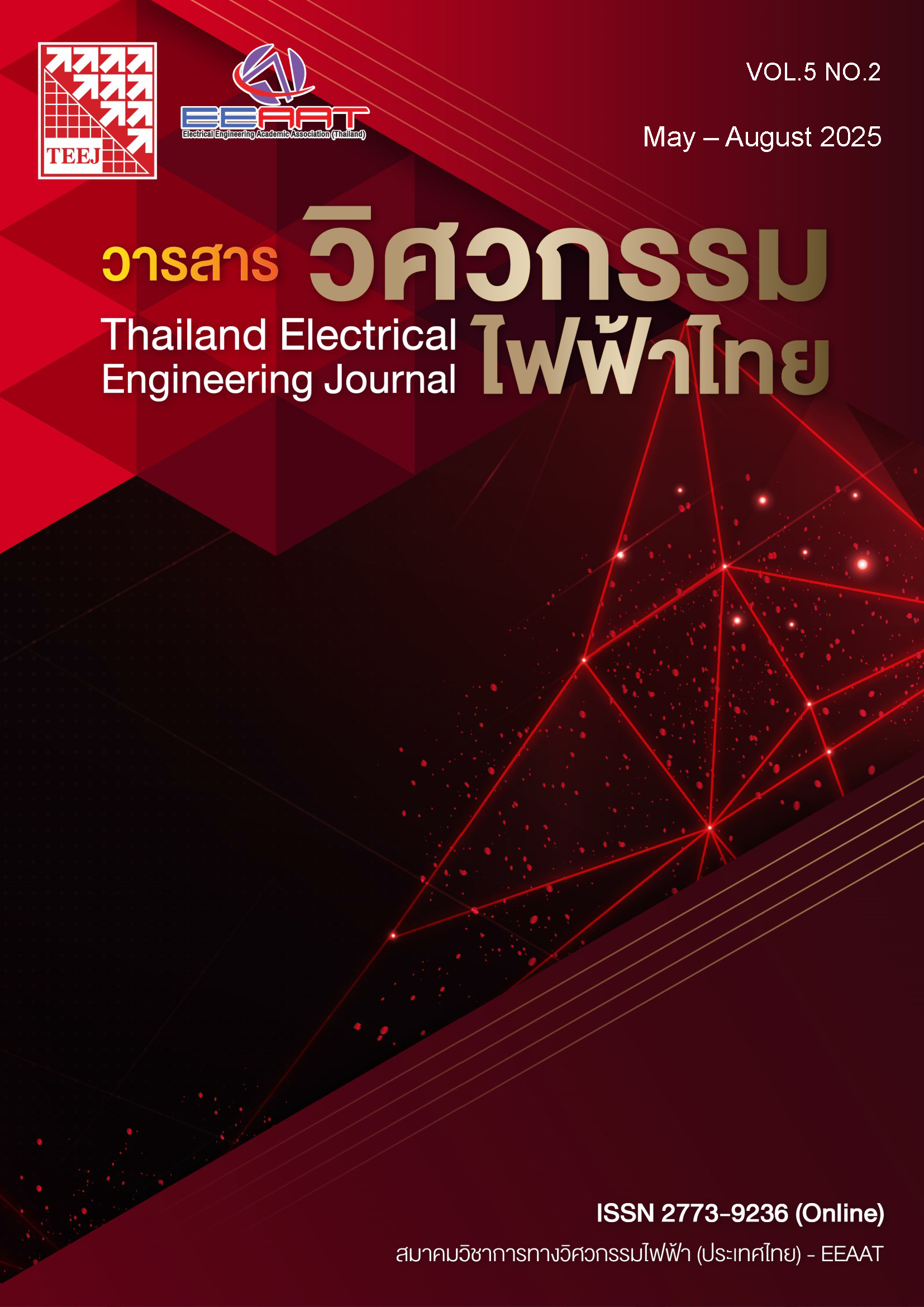Spatiotemporal Patterns of SO₂, NO₂, and CO Using Satellite Data Integrated Machine Learning in EEC Thailand
Main Article Content
บทคัดย่อ
Air pollution causes a major global environmental challenge especially in industrialized regions such as the Eastern Economic Corridor (EEC) of Thailand. This study assesses the spatiotemporal trends of SO₂, NO₂ and CO concentrations in the EEC (2019–2022) using Sentinel-5P satellite data, ERA5 meteorological variables and machine learning models (Random Forest, XGBoost, LightGBM). Results revealed that pollutant fluctuations were significantly influenced by wind, aerosol index, surface pressure and dew point. XGBoost provided superior accuracy (R²: SO₂=0.95, NO₂=0.90, CO=0.96). The study demonstrates satellite and machine learning efficacy in air quality monitoring to identify pollution hotspots and critical environmental drivers. This is to support air quality management in Thailand.
Article Details

อนุญาตภายใต้เงื่อนไข Creative Commons Attribution-NonCommercial-NoDerivatives 4.0 International License.
Journal of TCI is licensed under a Creative Commons Attribution-NonCommercial-NoDerivatives 4.0 International (CC BY-NC-ND 4.0) licence, unless otherwise stated. Please read our Policies page for more information...
เอกสารอ้างอิง
K. Thongphunchung et al., "Outpatient Department Visits and Mortality with Various Causes Attributable to Ambient Air Pollution in the Eastern Economic Corridor of Thailand," Int. J. Environ. Res. Public Health, vol. 19, no. 13, p. 7683, 2022. [Online]. Available: https://www.mdpi.com/1660-4601/19/13/7683
M. Jiang, E. Kim, and Y. Woo, "The Relationship between Economic Growth and Air Pollution—A Regional Comparison between China and South Korea," Int. J. Environ. Res. Public Health, vol. 17, no. 8, 2020. [Online]. Available: https://doi.org/10.3390/ijerph17082761
P. R. Shukla, "Construction and its Impact on Air Quality," Environ. Pollut., vol. 242, pp. 616–626, 2018.[Online].Available: https://doi.org/10.1016/j.envpol.2018.07.110
X. Wang, "Urbanization and its Impact on Air Quality," Urban Climate, vol. 28, p. 100464, 2019. [Online]. Available: https://doi.org/10.1016/j.uclim.2019.100464
P. M. Mannucci et al., "Effects on health of air pollution: a narrative review," Intern. Emerg. Med., vol. 10, no. 6, pp. 657–662, 2015. [Online]. Available: https://doi.org/10.1007/s11739-015-1276-7
Pollution Control Department, Thailand National Ambient Air Quality Standards, Bangkok, Thailand: Ministry of Natural Resources and Environment, 2021. [Online]. Available: https://www.pcd.go.th/
Pollution Control Department, Manual for Air Quality Measurement Stations, Bangkok, Thailand: Ministry of Natural Resources and Environment, 2021.
Pollution Control Department, Standard Methods for Measuring Sulfur Dioxide in Ambient Air, Bangkok, Thailand, 2021.
Pollution Control Department, Standard Methods for Measuring Nitrogen Dioxide in Ambient Air, Bangkok, Thailand, 2021.
Pollution Control Department, Standard Methods for Measuring Carbon Monoxide in Ambient Air, Bangkok, Thailand, 2021.
Eastern Economic Corridor Office, Master Plan for the Development of the Eastern Special Development Zone (2023–2027), Bangkok, Thailand: EEC Office, 2023.
A. Soleimany, R. Grubliauskas, and V. Šerevičienė, "Application of satellite data and GIS services for studying air pollutants in Lithuania (case study: Kaunas city)," Air Qual. Atmos. Health, vol. 14, no. 3, pp. 411–429, 2021. [Online]. Available: https://doi.org/10.1007/s11869-020-00946-z
J. P. Veefkind et al., "TROPOMI on the ESA Sentinel-5 Precursor: A GMES mission for global observations of the atmospheric composition for climate, air quality and ozone layer applications," Remote Sens. Environ., vol. 120, pp. 70–83, 2012. [Online].Available: https://doi.org/10.1016/j.rse.2011.09.027
H. Hersbach et al., "The ERA5 global reanalysis," Q. J. R. Meteorol. Soc., vol. 146, no. 730, pp. 1999–2049, 2020. [Online]. Available: https://doi.org/10.100(d)2/qj.3803
Y. Zhan et al., "Spatiotemporal prediction of continuous daily PM2.5 concentrations across China using a spatially explicit machine learning algorithm," Atmos. Environ., vol. 180, pp. 273–282, 2018. [Online]. Available: https://doi.org/10.1016/j.atmosenv.2018.03.031
J. Dou et al., "Estimating ground-level PM2.5 concentrations using random forest and spatiotemporal kriging ensemble models with OMI data," Remote Sens. Environ., vol. 257, p. 112355, 2021.
X. Liu et al., "Estimating CO concentrations using MOPITT and Random Forest–STK," Sci. Total Environ., vol. 651, pp. 2390–2400, 2019.
Y. Wang et al., "Estimating urban CO concentrations using Sentinel-5P and LightGBM," Atmos. Pollut. Res., vol. 12, no. 4, p. 101038, 2021.
Y. Wei et al., "Estimating air pollutants using Space-Time Extra Trees and big data," Sci. Total Environ., vol. 843, p. 157017, 2023.
S. Ahmad et al., "Predicting NO₂ using nested XGBoost models," Environ. Monit. Assess., vol. 196, no. 2, p. 155, 2024.
W. Li et al., "Hybrid PCA-Neural Networks model for SO₂ prediction with OMI data," Atmos. Res., vol. 278, p. 106382, 2022.

